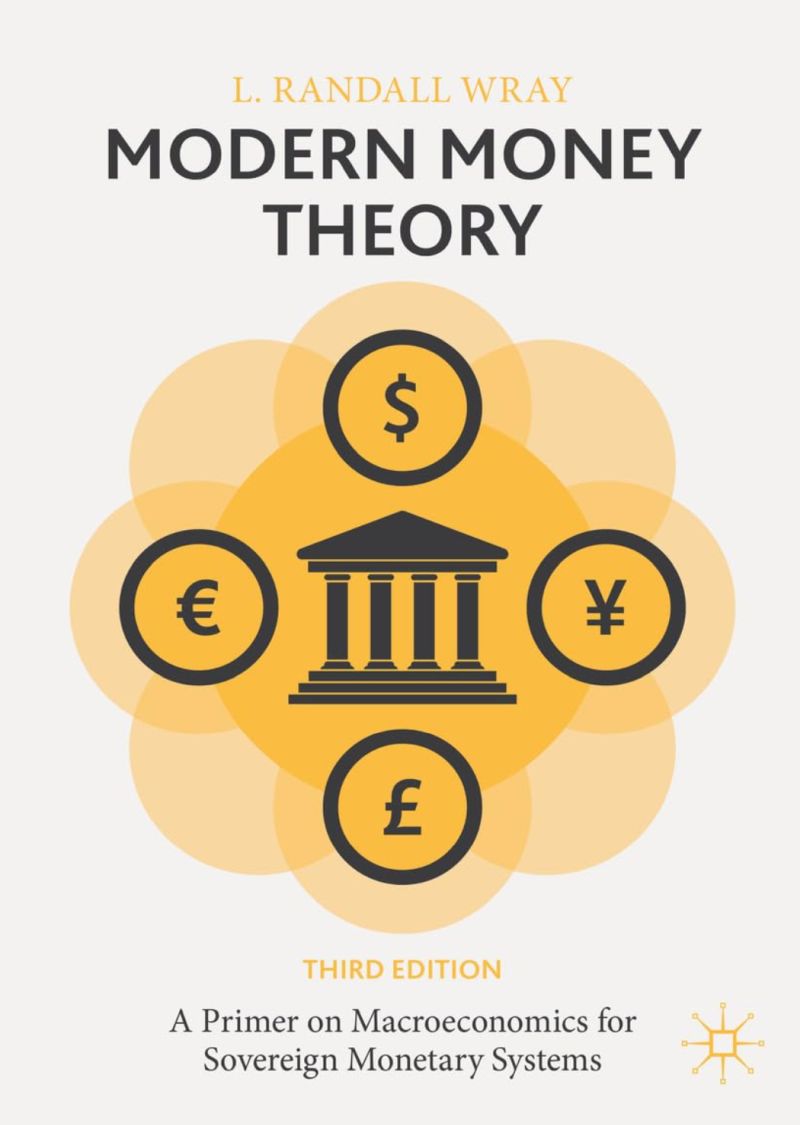Contents
1 The Basics of Macroeconomic Accounting 1
1.1 The Basics of Accounting for Stocks and Flows 1
1.1.1 One’s Financial Asset Is Another’s Financial Liability 1
1.1.2 Inside Wealth Versus Outside Wealth 2
1.1.3 A Note on Nonfinancial Wealth (Real Assets) 2
1.1.4 Net Private Financial Wealth Equals Public Debt 3
1.1.5 Rest of World Debts Are Domestic Financial Assets 4
1.1.6 A Note on the Importance of Inside Assets 4
1.1.7 Basics of Sectoral Accounting, Relations to Stock and Flow Concepts 5
1.1.8 Another Note on Real Assets 6
1.1.9 Conclusion: One Sector’s Deficit Equals Another’s Surplus 6
1.2 MMT, Sectoral Balances, and Behavior 7
1.2.1 Deficits→Savings and Debts→Wealth 8
1.2.2 Conclusion 11
1.3 Stocks, Flows, and Balance Sheet: A Bathtub Analogy 13
1.4 Government Budget Deficits Are Largely Nondiscretionary: The Cases of the Great Recession of 2007 and the COVID-19 Pandemic 17
1.5 The Wray Curve: Two Paths to Deficits 25
1.6 Accounting for Real Versus Financial (or Nominal) 28
2 Spending by Issuer of Domestic Currency 37
2.1 What Is a Sovereign Currency? 37
2.1.1 Domestic Currency 37
2.1.2 One Nation, One Currency (and Exceptions to the Rule) 38
2.1.3 Sovereignty and the Currency 40
2.2 What Backs Up Currency and Why Would Anyone Accept It? 42
2.2.1 Do Reserves of Metal or Foreign Exchange Back the Currency? 43
2.2.2 Legal Tender Laws 44
2.3 Taxes Drive Money 46
2.3.1 Sovereignty and Taxes 46
2.3.2 What Does Government Promise? What Does a Government IOU Owe You? 47
2.3.3 Conclusion: Taxes Drive Money 48
2.4 What If the Population Refuses to Accept the Domestic Currency? 48
2.5 Record Keeping in the Money of Account 53
2.5.1 Stocks and Flows Are Denominated in the
National Money of Account 53
2.5.2 The Financial System as Electronic Scoreboard 55
2.6 Sovereign Currency and Monetizing Real Assets 57
2.7 Sustainability Conditions 60
2.7.1 “Sustainability Conditions” for Government Deficits 61
2.7.2 “Sustainability” of Current Account Deficits 66
3 The Domestic Monetary System: Banking and Central Banking 69
3.1 IOUs Denominated in National Currency 69
3.1.1 Government 69
3.1.2 Private IOUs 70
3.1.3 Leveraging 71
3.2 Central Bank Clearing 73
3.2.1 Clearing Accounts Extinguishes IOUs 74
3.2.2 Pyramiding Currency 75
3.3 Central Bank Operations in Crisis: Lender of Last Resort 82
3.4 Balance Sheets of Banks, Monetary Creation by Banks,
and Interbank Settlement 85
3.5 Exogenous Interest Rates and Quantitative Easing 92
3.6 The Technical Details of Central Bank and Treasury Coordination: The Case of the Fed2 94
3.7 Treasury Debt Operations 102
3.8 Conclusions on the Central Bank and Treasury Roles 106
4 Fiscal Operations in a Nation That Issues Its Own Currency 109
4.1 Introductory Principles 110
4.1.1 Statements That Do Not Apply to a Sovereign Currency Issuer 110
4.1.2 Principles That Apply to a Sovereign Currency Issuer 110
4.2 Effects of Sovereign Government Budget Deficits on Saving, Reserves, and Interest Rates 112
4.2.1 Budget Deficits and Saving 112
4.2.2 Effects of Budget Deficits on Reserves and Interest Rates 113
4.2.3 Complications and Private Preferences 115
4.3 Government Budget Deficits and the “Two-Step” Process of Saving 118
4.3.1 Bond Sales Provide an Interest-Earning Alternative to Reserves 121
4.3.2 Central Bank Accommodates Demand for Reserves 122
4.3.3 Government Deficits and Global Savings 123
4.4 What If Foreigners Hold Government Bonds? 125
4.4.1 Foreign Holdings of Government Debt 125
4.4.2 Current Accounts and Foreign Accumulation of Claims 129
4.5 Currency Solvency and the Special Case of the US Dollar 132
4.5.1 Isn’t the United States Special? 133
4.5.2 What About Government That Borrows in Foreign Currency? 135
4.5.3 Conclusion on US Exceptionality 137
4.6 Sovereign Currency in the Open Economy 138
4.6.1 Government Policy and the Open Economy 138
4.6.2 Do Floating Rates Eliminate “Imbalances”? 140
4.6.3 Sovereign Versus Nonsovereign Currencies 141
4.7 What About a Country That Adopts a Foreign Currency? 145
4.7.1 Solvency Questions and Ponzi Finance in a Nonsovereign Currency 146
5 Tax Policy for Sovereign Nations 149
5.1 Why Do We Need Taxes? The MMT Perspective 149
5.2 What Are Taxes for? The MMT Approach 154
5.3 Taxes for Redistribution 159
5.4 Taxes and the Public Purpose 162
5.5 Tax Bads, Not Goods 164
5.6 Bad Taxes 168
6 Modern Money Theory and Alternative Exchange Rate Regimes 175
6.1 The Gold Standard and Fixed Exchange Rates 176
6.2 Floating Exchange Rates 178
6.3 Commodity Money Coins? Part I 180
6.4 Commodity Money Coins? Part II 183
6.5 Exchange Rate Regimes and Sovereign Defaults 188
6.6 The Euro: The Set-up of a Nonsovereign Currency 192
6.6.1 The Euro 192
6.6.2 Comparison with US States 194
6.7 The Crises of the Euro 196
6.8 Have the Euro Problems Been Resolved? 202
6.8.1 Lasting Reform 204
6.9 Currency Regimes and Policy Space: Conclusion 206
7 Monetary and Fiscal Policy for Sovereign Currencies: What Should Government Do? 209
7.1 Just Because Government Can Afford to Spend Does Not Mean Government Ought to Spend More 210
7.2 The “Free” Market and the Public Purpose 212
7.3 Functional Finance 215
7.4 Functional Finance Versus the Government Budget Constraint 220
7.5 The Debate About Debt Limits (US Case) 225
7.5.1 Other Ways to Eliminate the Debt Limit 228
7.6 A Budget Stance for Economic Stability and Growth 230
7.7 Functional Finance and Exchange Rate Regimes 233
7.8 Functional Finance and Developing Nations 238
7.9 Exports Are a Cost, Imports Are a Benefit: A Functional Finance Approach 239
8 Policy for Full Employment and Price Stability 243
8.1 Functional Finance and Full Employment 243
8.1.1 Program Design 244
8.1.2 Program Advantages 245
8.1.3 Macroeconomic Stability Issues 246
8.1.4 What About Exchange Rate Effects? 247
8.1.5 Affordability Issues 248
8.1.6 Employment Swings 249
8.2 The JG/ELR for a Developing Nation 254
8.3 Program Manageability 259
8.4 The JG/ELR and Real-World Experience 262
8.5 The JG and Inequality 265
8.6 Conclusions on Full Employment Policy 268
8.7 MMT for Austrians: Can a Libertarian Support the JG? 270
9 Inflation and Sovereign Currencies 275
9.1 Inflation and the Consumer Price Index 275
9.2 Alternative Explanations of Hyperinflation 281
9.3 Real-World Hyperinflations 287
9.4 Conclusions on Hyperinflation 291
9.5 Quantitative Easing and Inflation 292
9.6 The COVID Pandemic and the Monetary Policy Response 296
9.7 Conclusion: MMT and Policy 299
Bibliography 305
Index 313

